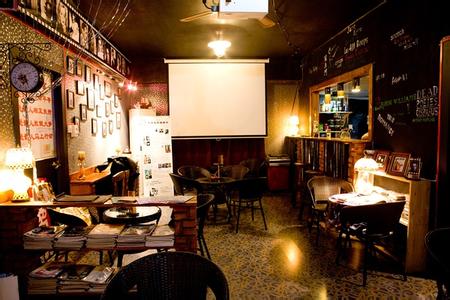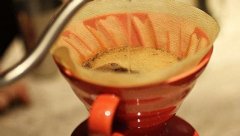Coffee common sense Fancy coffee and pure coffee small knowledge-1

Italian espresso (Espresso)
The word "Espresso" comes from the Italian word "fast" because Italian espresso is made and delivered to consumers very quickly. Espresso drips slowly from the filter like warm honey, dark reddish brown with a cream content of 10% to 30%. The brewing of espresso can be defined by four M's: Macinazione represents a correct grinding method for mixing coffee; Miscela is a coffee mixture; Macchina is the machine for making espresso; and Mano represents the skilled technique of the coffee maker. Only when each of the four M elements is accurately mastered, the brewed espresso is the best.
When drinking espresso, we are quickly impressed by its strong taste and aroma with only a sip, which is the difference between espresso and other coffees. Aroma and concentration are two measures of whether Italian espresso tastes good or not.
Cappuccino coffee (Cappuccino)
Cappuccino is another kind of espresso, which contains 50% steamed milk and 50% foamed milk. It can also be said to contain 1pm 3 espresso, 1amp 3 steamed milk and 1amp 3 foamed milk. But it also depends on the person who makes the coffee. More steamed milk and less foam are used in many places.
The color of this coffee is like the headscarf worn by Italian monks, so it is named cappuccino (coffee with cream cubes). Accompanied by cinnamon sticks, and then sprinkled with lemon juice, showing a complex flavor.
The so-called dry cappuccino (Dry Cappuccino) refers to the conditioning method with more milk bubbles and less milk. it tastes stronger than milk and is suitable for people with heavy taste. When it comes to wet cappuccino (Wet Cappuccino), it refers to the practice of fewer milk bubbles and more milk, with milk fragrance overshadowing the thick coffee flavor, which is suitable for those with light taste. The flavor of the wet cappuccino is similar to that of the popular latte. Generally speaking, the taste of cappuccino is heavier than latte. If you have a heavy taste, you might as well order cappuccino or dry cappuccino. If you are not used to the heavy smell of coffee, you can order latte or wet cappuccino.
Preparation method: pre-heat the deep-fried coffee, pour it into a small coffee cup, add 2 tablespoons of granulated sugar, float with 1 tablespoon cream, sprinkle with lemon juice or orange juice, and insert the cup with cinnamon sticks instead of spoons.
Mocha coffee (Mocha)
Mocha is a port in Yemen. Yemen is located in southwest Asia, in the southern corner of the Arabian Peninsula, is a major coffee producer.
At present, the coffee produced in Yemen is the best, followed by Ethiopia's mocha; mocha coffee belt smooth in the acid to strong acid, sweet, unique flavor, containing chocolate flavor; with the temperament of a lady, is a very characteristic pure coffee.
Mocha coffee shows a strong New York flavor in a small cup. The preparation method: add 20ml chocolate syrup and very strong deep-fried coffee to the cup, stir well, add 1 tablespoon cream to float on top, peel some chocolate powder for decoration, and finally add some cinnamon sticks.
Swiss mocha (Wicklana coffee), mocha with fresh milk and chocolate syrup, plus whipped cream and chocolate
Mocha mint coffee
Mocha mint coffee: "pour warm coffee on cold cream." the cold cream floats and turns into cold sweet cream. The coffee under it is hot. It is fun to drink without stirring to keep them at different temperatures. This is America's favorite chocolate mint coffee, which is made in proportion to the mint flavor and coffee.
Preparation method: add 20 grams of chocolate, deep-fried coffee, 1 tablespoon white mint, add 1 tablespoon cream to float on top, peel some chocolate powder, and finally decorate a mint leaf.
Blue Mountain Coffee (Blue Mountain)
Famous coffee is characterized by its origin. Climate and soil quality will eventually bring subtle changes to the taste of coffee. The tropical islands of Jamaica have the perfect conditions for growing coffee. Most of the island is covered by mountains, including the Blue Mountains, which are the highest part of the island. The Blue Mountains is a fertile land, where the hot climate, abundant precipitation and high altitude are perfectly combined. Coffee production is the highest in the world at nearly 7500 feet above sea level.
There are three grades of coffee in the Blue Mountains of Jamaica: blue Mountain Coffee (Blue Mountain Coffee), Alpine Coffee (Jamaica High Mountasin Supreme Coffee Beans) and Jamaican Coffee (Jamaica Prime Coffee Beans). Among them, Blue Mountain Coffee and Alpine Coffee are each divided into two grades. In terms of quality, the order from top to bottom is: blue Mountain 1, Blue Mountain 2, Gaoshan 1, Gaoshan 2, Jamaican Coffee. Coffee grown between 457m and 1524 m above sea level is usually called Blue Mountain Coffee. Coffee grown between 274m and 457m above sea level is often called Jamaica Prime Coffee Beans, and the price of blue mountain coffee is several times higher than that of alpine coffee.
Coffee is not native to Jamaica. Coffee beans were brought to the island by the Governor in 1728. Blue Mountain Coffee has a very pure taste and has a sweet taste. Its taste is mellow, smooth, strong and delicate; pure Blue Mountain coffee has a light taste and flavor, but it is very mellow and delicate; it has aristocratic taste and is the best in coffee. Because it grows in a very narrow geographical area, the production of Blue Mountain Coffee is also very limited and sometimes difficult to buy.
Latte (Latte)
This is an espresso with steamed milk. In some coffee shops, there is a small amount of foam on the top. It has less foam than cappuccino coffee.
Italian espresso adds high concentrations of hot milk and foamed fresh milk to retain a hint of coffee aroma and sweetness. Sending out a rich and charming smell of fresh milk, the entrance is smooth and smooth, which is the favorite of many girls.
The ratio of coffee to milk in the latte is 1:8:1, so it can be said to be a burden-free cup of coffee, can drink the warmth of milk, like a cup of milk coffee, but drink milk with coffee flavor.
If you add some frothy cold milk to the hot milk, it becomes an American latte. Starbucks American lattes are made this way: espresso at the bottom, milk heated to 65-75 ℃ in the middle, and cold milk foam no more than half a centimeter.
Important Notice :
前街咖啡 FrontStreet Coffee has moved to new addredd:
FrontStreet Coffee Address: 315,Donghua East Road,GuangZhou
Tel:020 38364473
- Prev

Boutique Coffee knowledge about roasting of Coffee
Roasting: as the name implies, is to provide heat to coffee beans, so that a series of internal chemical changes, showing the unique color, aroma and taste of coffee. Every coffee bean contains fragrance, sour taste, sweet taste and bitter taste. How to release it incisively and vividly depends on the roasting heat. Coffee beans begin the caramelization process at 170200 degrees Celsius, at 185240 ℃.
- Next

The easiest way to brew coffee by hand
[characteristics] the simplest way to brew coffee. Filter paper can be discarded immediately after use, which is more sanitary and easy to clean up. The amount of boiling water and the injection method can also be adjusted. One person can also brew, which is the best way to brew a small number of people. [about apparatus] the drip can be divided into one hole and three holes. Three holes are used here. The spout for injecting boiling water is preferably small and can be opened.
Related
- Beginners will see the "Coffee pull flower" guide!
- What is the difference between ice blog purified milk and ordinary milk coffee?
- Why is the Philippines the largest producer of crops in Liberia?
- For coffee extraction, should the fine powder be retained?
- How does extracted espresso fill pressed powder? How much strength does it take to press the powder?
- How to make jasmine cold extract coffee? Is the jasmine + latte good?
- Will this little toy really make the coffee taste better? How does Lily Drip affect coffee extraction?
- Will the action of slapping the filter cup also affect coffee extraction?
- What's the difference between powder-to-water ratio and powder-to-liquid ratio?
- What is the Ethiopian local species? What does it have to do with Heirloom native species?

